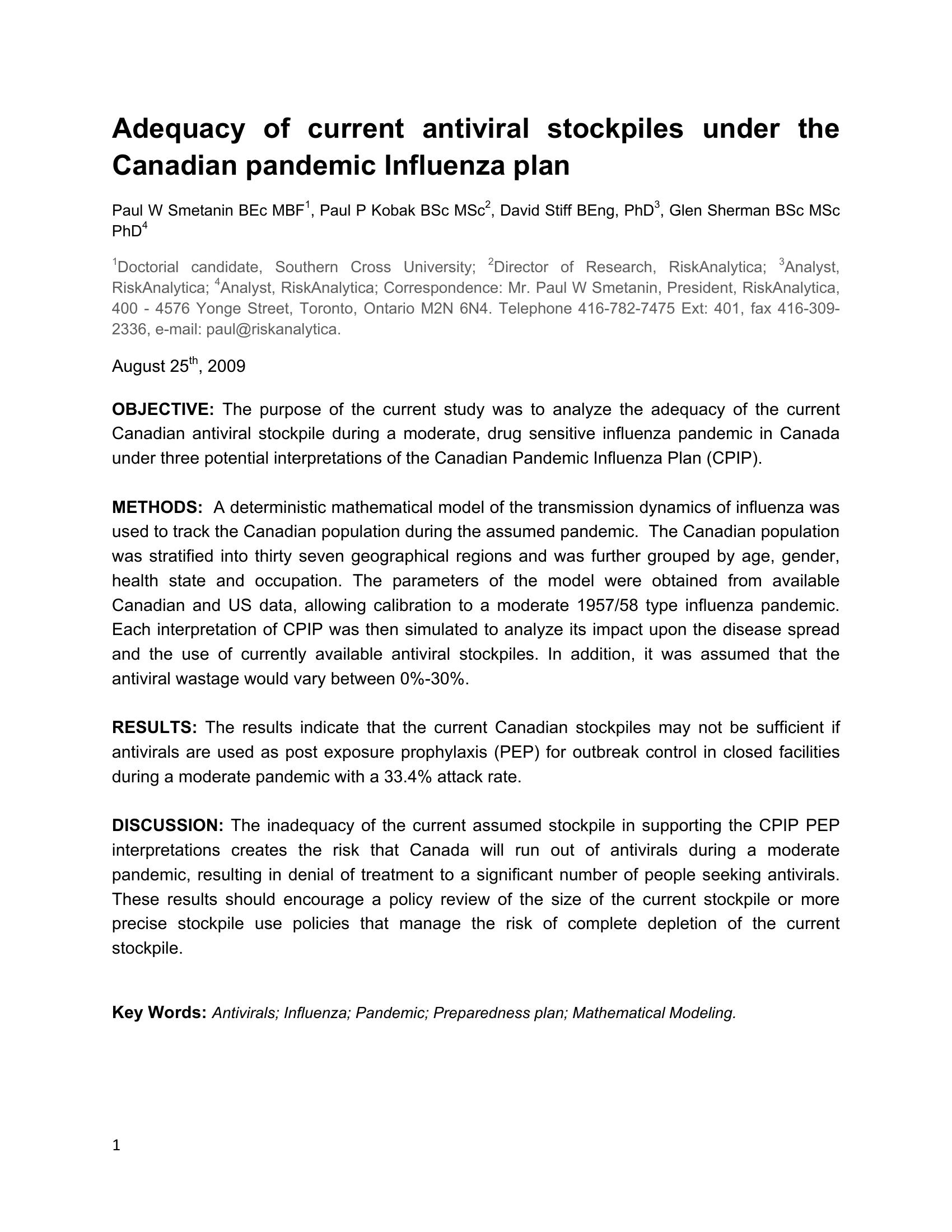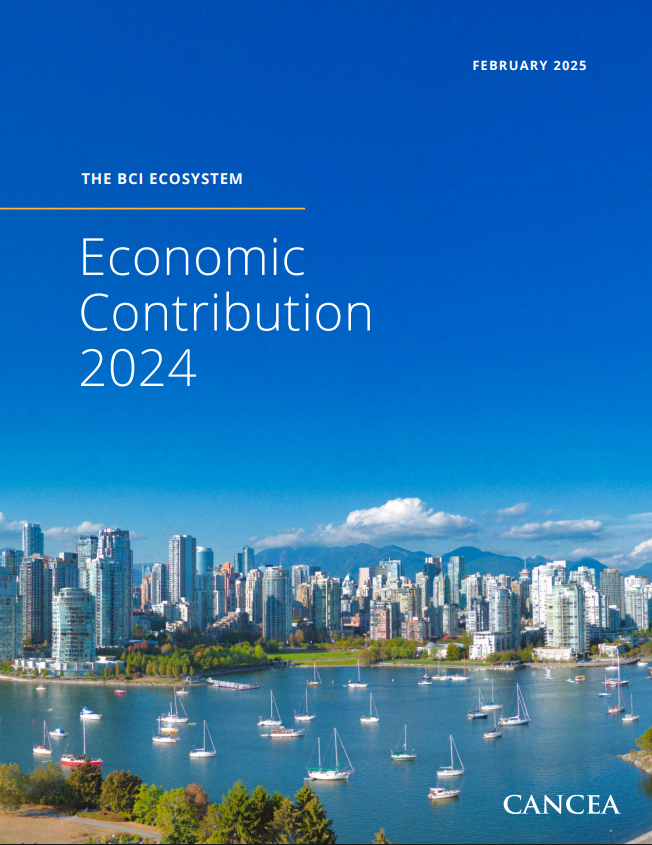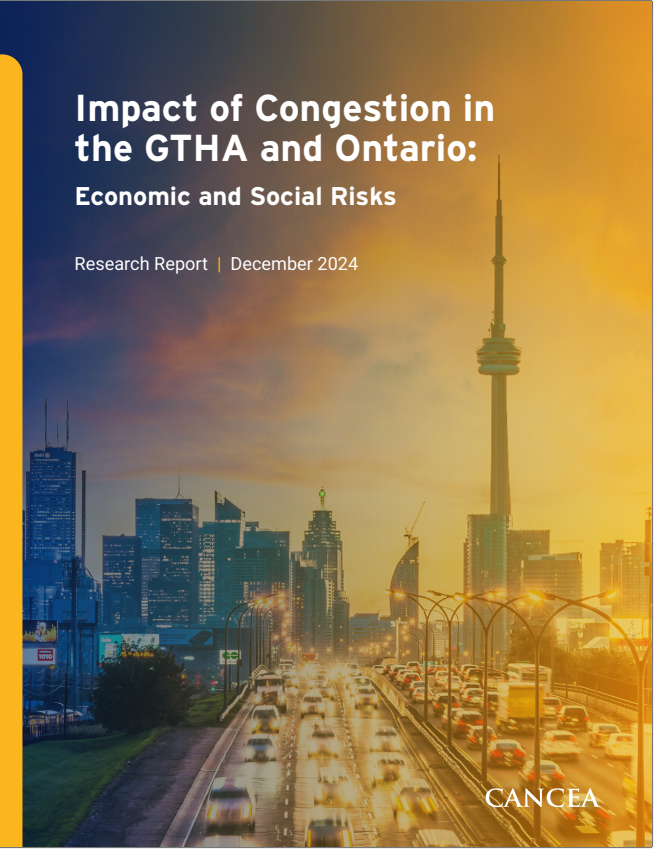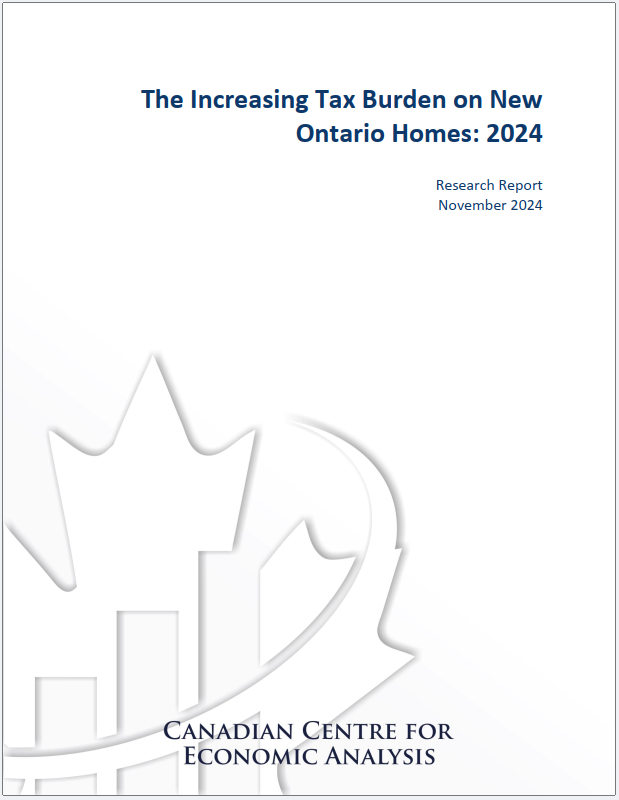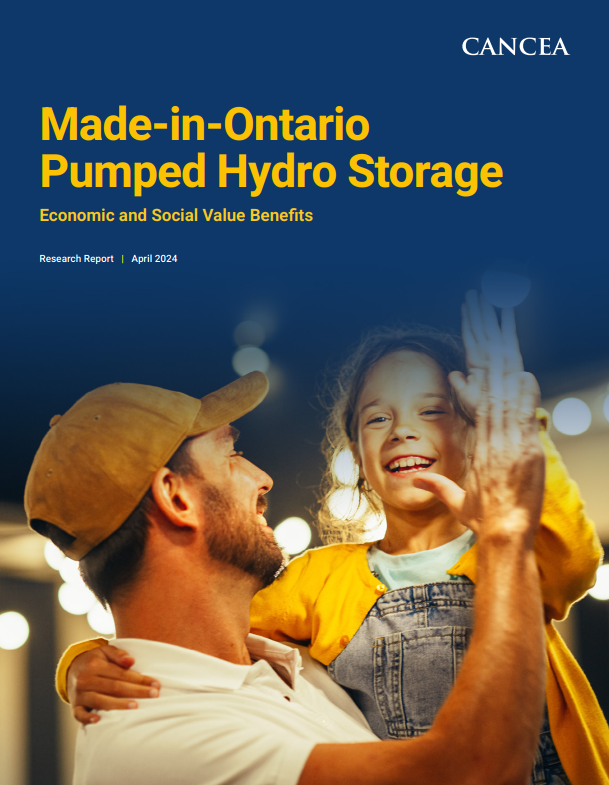Background:
The purpose of the current study was to analyze the adequacy of the current Canadian antiviral stockpile during a moderate, drug sensitive influenza pandemic in Canada under three potential interpretations of the Canadian Pandemic Influenza Plan (CPIP).
Methods:
A deterministic mathematical model of the transmission dynamics of influenza was used to track the Canadian population during the assumed pandemic. The Canadian population was stratified into thirty seven geographical regions and was further grouped by age, gender, health state and occupation. The parameters of the model were obtained from available Canadian and US data, allowing calibration to a moderate 1957/58 type influenza pandemic. Each interpretation of CPIP was then simulated to analyze its impact upon the disease spread and the use of currently available antiviral stockpiles. In addition, it was assumed that the
antiviral wastage would vary between 0%-30%.
Results:
The results indicate that the current Canadian stockpiles may not be sufficient if antivirals are used as post exposure prophylaxis (PEP) for outbreak control in closed facilities during a moderate pandemic with a 33.4% attack rate.
Discussion:
The inadequacy of the current assumed stockpile in supporting the CPIP PEP interpretations creates the risk that Canada will run out of antivirals during a moderate pandemic, resulting in denial of treatment to a significant number of people seeking antivirals. These results should encourage a policy review of the size of the current stockpile or more precise stockpile use policies that manage the risk of complete depletion of the current stockpile. “
